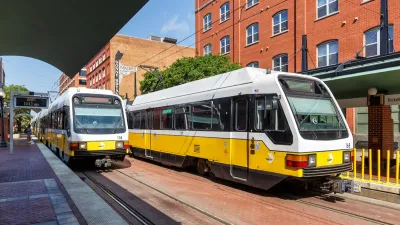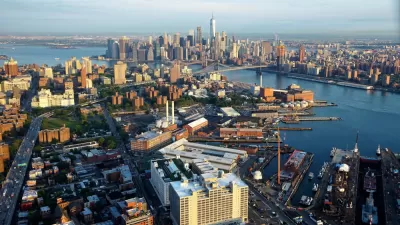The message from last weekend's two-day symposium at Columbia University, the Queens Museum and the Museum of the City of New York on Robert Moses: many aspects of the master builder's place in history haven't been told, despite Robert Caro's 1,162-page Pulizter Prize-winning biography; and that New York may need to rethink the paradigm for big plans and community engagement as the unique metropolis makes new investments in transit, roadways and large redevelopment projects from Ground Zero to Hudson Yards.
The message from last weekend's two-day symposium at Columbia University, the Queens Museum and the Museum of the City of New York on Robert Moses: many aspects of the master builder's place in history haven't been told, despite Robert Caro's 1,162-page Pulizter Prize-winning biography; and that New York may need to rethink the paradigm for big plans and community engagement as the unique metropolis makes new investments in transit, roadways and large redevelopment projects from Ground Zero to Hudson Yards.
"Robert Moses: New Perspectives on the Master Builder" featured 21 presentations of papers from leading thinkers in planning and academia, many of which informed the well-visited trifecta of exhibitions, Robert Moses and the Modern City. The three concurrent exhibitions are Robert Moses and the Modern City: Remaking the Metropolis, at the the Museum of the City of New York www.mcny.org; Robert Moses and the Modern City: The Road to Recreation, at the Queens Museum of Art www.queensmuseum.org; and Robert Moses and the Modern City: Slum Clearance and the Superblock Solution at the Wallach Gallery at Columbia University www.columbia.edu/cu/wallach.
Ray Bromley from the University of Albany/SUNY had the heretical suggestion that the Cross-Bronx Expressway isn't as bad as roadways in places like Detroit, and may not have been the single cause of decline in the South Bronx. Jeffrey Kroessler from the John Jay College of Criminal Justice examined a project Moses never built, the Richmond parkway on Staten Island. Robert Fishman from the University of Michigan chronicled how the defeat of the 5th Avenue extension through Washington Square Park christined a new kind of community activism, thanks to Shirley Hayes and Jane Jacobs. The 1929 plan by the Regional Plan Association contained much of the framework that Moses implemented, said David Johnson from the University of Tennessee.
The Moses approach in slum clearance and public housing also had precedents, and the razing of the Lincoln Square neighborhood to make way for Lincoln Center underscored how the new came at a cost: the loss of existing urban neighborhoods, according to Samuel Zipp from the University of California Irvine. Jamieson Doig from Princeton University and Liz Cohen from Harvard told the story of port authority chief Austin Tobin and New Haven and Boston master builder Ed Logue respectively, to highlight how power-brokering was done by Moses clones and rivals.
The question of whether New York needs a new Robert Moses is an intriguiging one. The talk by Robert Caro Feb. 11 was packed and accompanied by thunderous applause, among many who clearly believe this would not be such a good idea. But the re-examination of Moses and his time, in the context of New York's future, has been a useful exercise for a city poised to reinvent itself in the years ahead, yet again.

Study: Maui’s Plan to Convert Vacation Rentals to Long-Term Housing Could Cause Nearly $1 Billion Economic Loss
The plan would reduce visitor accommodation by 25,% resulting in 1,900 jobs lost.

Alabama: Trump Terminates Settlements for Black Communities Harmed By Raw Sewage
Trump deemed the landmark civil rights agreement “illegal DEI and environmental justice policy.”

North Texas Transit Leaders Tout Benefits of TOD for Growing Region
At a summit focused on transit-oriented development, policymakers discussed how North Texas’ expanded light rail system can serve as a tool for economic growth.

Paris Bike Boom Leads to Steep Drop in Air Pollution
The French city’s air quality has improved dramatically in the past 20 years, coinciding with a growth in cycling.

Why Housing Costs More to Build in California Than in Texas
Hard costs like labor and materials combined with ‘soft’ costs such as permitting make building in the San Francisco Bay Area almost three times as costly as in Texas cities.

San Diego County Sees a Rise in Urban Coyotes
San Diego County experiences a rise in urban coyotes, as sightings become prevalent throughout its urban neighbourhoods and surrounding areas.
Urban Design for Planners 1: Software Tools
This six-course series explores essential urban design concepts using open source software and equips planners with the tools they need to participate fully in the urban design process.
Planning for Universal Design
Learn the tools for implementing Universal Design in planning regulations.
Smith Gee Studio
Alamo Area Metropolitan Planning Organization
City of Santa Clarita
Institute for Housing and Urban Development Studies (IHS)
City of Grandview
Harvard GSD Executive Education
Toledo-Lucas County Plan Commissions
Salt Lake City
NYU Wagner Graduate School of Public Service




























